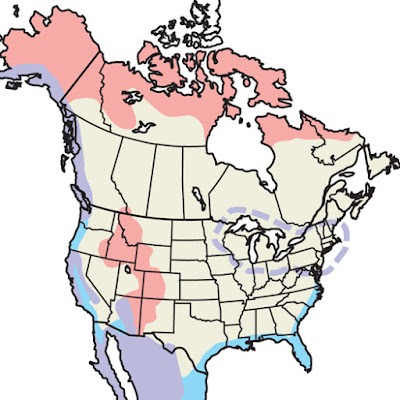I was on a walk with Judy this morning in Live Oak Canyon and saw my second peregrine falcon in our canyon, not too far from our home. The first was in late August or early September, early in the morning so my photos were not as good.
It was standing in a dead oak tree eating. Peregrines eat mostly birds: mostly pigeons in cities; ducks and other shorebirds along the coast (why it is sometimes called the duck hawk); and prey as large as gulls or as small as song birds. It appears that they usually catch them in flight. They may also eat some small mammals and rarely carrion. I see lots of birds standing in the tree where it was eating, so I am assuming it probably caught a bird in the tree or flying near it. I'm guessing it was eating a mourning dove, a European starling, an acorn woodpecker, a northern flicker, a western bluebird or a California towhee, birds I have been seeing recently in that vicinity. There was also a raven in the tree, perhaps waiting to clean up any scraps.
As I attempted to get closer it flew a short distance away. I got a few more photos of it in the next tree, before it flew back to the original tree. I went back toward the original tree from a different angle and it flew before I could get any more photos.
A map on the Audubon website shows it as a rare winter visitor to our area, but it appears that it is uncommon everywhere in the U.S.
 |
| The light blue for Southern California shows it as an uncommon winter visitor. |
A map from Wikipedia shows the worldwide distribution of subspecies and our local subspecies which is the American peregrine falcon or duck hawk. Note that in the continental U.S. it is only found along the west coast, in the Rocky Mountains and in an area east of the Cascades.








Pretty amazing photos, and pretty amazing to see one when they are rare winter visitors. Wouldn't it be fun to know where its peregrinations lead it next?
ReplyDelete